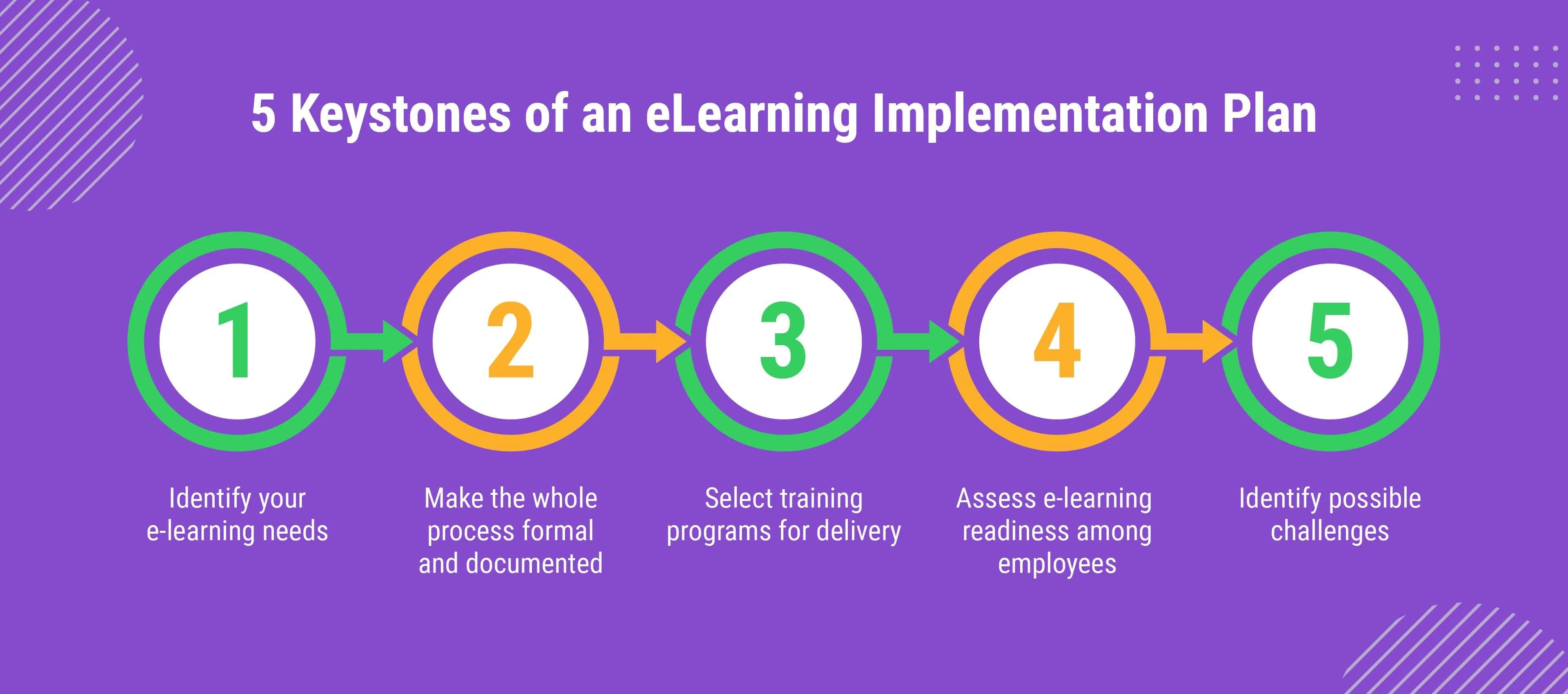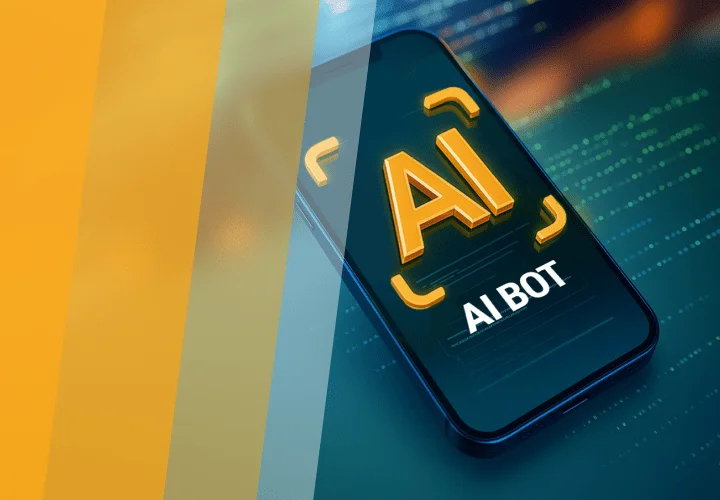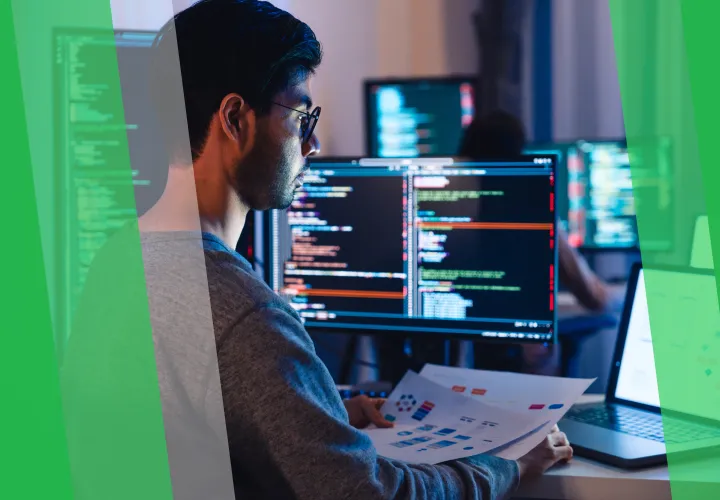How to Implement e-Learning in the Organization
Table of contents
- What’s eLearning? From Benefits to Types of Existing Systems and Methods of e-Learning Delivery
- Benefits of eLearning for Businesses
- Types of eLearning Training
- Steps to Deliver eLearning Efficiently
- Best Practices of eLearning Implementation
- E-learning Implementation Plan: How to Make it Right?
- What Are the Possible Challenges a Business Can Face When Implementing e-Learning?
- eLearning Implementation Process in Steps
E-learning systems are not new to organizations. For years, they have been used for consistent training delivery, reduction of costs associated with traveling of employees for educational purposes, and provision of access to training materials anywhere and anytime. Still, to clarify things and give you a better vision of what e-learning can bring to business and how to implement it to achieve success, let’s go through the essentials.
In this article, you will find answers to the questions of what e-learning is and in which ways it can work for your organization, what are the most successful methods of e-learning delivery, what are the existing types of systems, why to invest in e-learning system development, how to smoothly implement the one into the organization, and what the possible challenges are to address.
What’s eLearning? From Benefits to Types of Existing Systems and Methods of e-Learning Delivery
Whether the talk is about watching an educational video, reading an interesting article, or taking a quiz online or on some digital device — all that is eLearning. While it is true that eLearning can’t replace full-scale education, it is more convenient and easy to customize with VR, AI, or other innovations that take learning up to the next level.
But what are the crucial pros for implementing e-learning systems into organizations? Let’s try to figure that out by pointing out the benefits these systems bring.
Benefits of eLearning for Businesses
eLearning is a great business tool because it offers:

Lower training costs
With eLearning, businesses can cut training costs associated with covering travel expenses and renting hotel rooms by simply developing an online course and sharing it with employees.
Wider coverage
Distance learning has no barriers. It allows training hundreds of employees in dozens of offices across the world in a uniform format.
Single knowledge base
All learning materials are stored in one place, a Learning Management System (LMS). Employees can log in to the LMS at a convenient time from any device, find the course they need, and learn the material.
Faster employee development
Traditional training can be rather slow because it depends on the business trainers’ working hours. An LMS is available anytime, making it possible for employees to study whenever they can, whether during their lunch break or at home.
Easy progress tracking
Most LMSs have embedded analytic tools that show each student’s progress in graphs and reports.
Business adaptability
eLearning helps employees keep up with the company’s rhythm and solve problems in real-time. So if there is a need, for example, to introduce a new product to the sales team, it is possible to create a digital course and deliver it instantly to thousands of employees.
But there are also other ways in which e-learning systems can deliver content. Let’s look at them below.
Types of eLearning Training
The more relevant, engaging, and interactive your course is, the higher its value and the better learning outcomes are. E-learning systems allow using different types of content delivery. So what are these types?

While it’s possible to choose any of these types, the efficiency of your employees’ training depends on many factors.
Steps to Deliver eLearning Efficiently
There are some essential steps a business can take to deliver e-learning in the best possible way. Here they are:
Set goals
This could be soft-skills training of employees or level-up of qualifications.
Choose appropriate tools
Depending on the educational complexity, you can choose from simple tools like mailouts to more complex ones, like AI algorithms.
Prepare a plan
Write down a plan in stages and allocate a budget for each one.
Create content
Develop educational materials for your employees, and better start simple.
Get your LMS ready
Once your content is ready, upload it to the LMS and organize it correctly.
Do a test run
When the system is ready, invite a few employees for a pilot run to monitor everything and get feedback, so you can refine the training program before the final launch.
Start training
Invite your employees to the LMS and assign courses.
Estimate efficiency
Use built-in statistics and gather employee feedback to evaluate e-learning efficiency.
Best Practices of eLearning Implementation
But before you take advantage of everything described above, there are other important things to consider, including the establishment of an e-learning implementation plan that will ensure that the system you are going to develop is tailored to your needs, the analysis of possible challenges, and the establishment of the successful e-learning implementation process.
E-learning Implementation Plan: How to Make it Right?
When you decide to implement e-learning into your organization, you have to start by building an implementation plan that will address your business needs. So here is a kind reminder of what needs to be considered.

What Are the Possible Challenges a Business Can Face When Implementing e-Learning?
When it comes to the identification of challenges, they can largely vary. Still, here are some that are applicable to any business. They are:
Dry and dull subject matter
Any LMS system, even the most proficient one, will fail to provide efficient learning in case it’s not engaging. So make sure that your content delivery method brings users a sense of satisfaction. Today, this can easily be achieved with the use of innovations like AR but other ways such as gamification can also work well.
Lack of learner motivation
Motivation is one of the key factors in learning success, and fortunately, there are some proven ways that can help businesses increase it. This could be the delivery of information about the learner’s progress, certain rewards for the successful completion of tasks, and even motivational mailing.
Unrealistic deadlines
Make sure that people responsible for setting the deadlines are aware of every step involved in the e-learning process.
Staying up-to-date with modern tech
Every year welcomes new tech tools, gadgets, and software that you can use to improve e-learning delivery methods. But, with so much digital transformation, it can be hard to tell which new learning technology is worth the investment. To address this challenge, you can attend tech conferences, events, trade shows, as well as read tech blogs, case studies, and reviews.
Inexperienced partners
If the company that delivers you e-learning solutions is not familiar with e-learning initiatives, the process of development can become a real headache both for you and the development team.
That’s why it’s so important to explain in detail what solution you are expecting to get, what your metrics of success will be, and how you’ll achieve your goals.
eLearning Implementation Process in Steps
And now we get to the final stage that will allow your company to ensure that your system is implemented right.
Define Scope
Carefully define the scope so that it is in line with your organizational goals not to get off track when the development process starts.
Choose a Technology Partner
It’s always better to place your focus on choosing a technology partner who will be capable of providing you with a team that involves specialists for fit-gap analysis, a project manager, an implementation team, and so on. Furthermore, if you don’t have an internal IT department, you will need people that will help you keep your system up-to-date and react to any issues asap, and a technology partner can provide you with such services.
Pick a Platform
You have to decide what mechanism you will use to deliver your e-learning and what tools you will use to make it real. These are critical questions that need to be answered so that you can effectively estimate and manage the project budget.
Define a Budget
Before your project starts, you need to define the budget and agree upon it with your partner if you don’t want to see how costs can add up quickly.
Mind Quality Assurance
Throughout the entire project, and even after implementation, you need to have a means for quality assurance. This includes installing and running the LMS and future updates (both technical and structural). You should have quality assurance stages built into the different phases of your project, so that you can maintain high standards, remain in-scope and on budget.
One more thing to clarify here is that all projects are different and there’s no unified recipe for success. Still, cooperation with a trusted technology partner like your fellow Emerline can free you from all the headaches associated with project planning, development, and implementation.
We are experienced in the delivery of eLearning solutions for educational institutions, training centers, and other EdTech organizations, ensuring an engaging and results-driven learning experience all the way through. So if you have an idea of implementing e-learning into your business, have some questions, or want to clarify some details, you are always welcome to contact us, at any time.
Published on Nov 17, 2021





